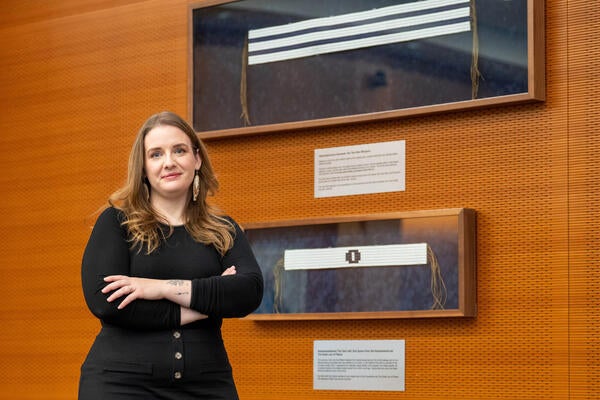
Perceptions of supernatural beings reveal feelings about good and bad in humans
People’s beliefs about good and evil characters are influenced by their views of ordinary humans

People’s beliefs about good and evil characters are influenced by their views of ordinary humans
By Media RelationsWhat transpires in comedies and cartoons when a character has a devil on one shoulder and an angel on the other is not far off from people’s perceptions of the real world, finds a new study from the University of Waterloo.
Intended to illustrate the characters’ decision-making dilemma with comedic results, the moral character and motives of the supernatural beings are obvious. And people have similar expectations when it comes to individuals they see as good or bad.
The researchers explored expectations about how good and evil individuals respond to requests. The researchers were interested in understanding why movies and folktales often depict the devil and demons as eager to grant accidental requests, whereas angels are not depicted this way.
Their study indicates that people’s beliefs about good and evil characters are influenced by their views of ordinary humans.
“Our results suggest people expect good agents will be sensitive to intentions behind requests whereas they expect evil individuals will be relatively insensitive to these intentions,” said Ori Friedman, developmental psychology professor at Waterloo and lead author of the study. “These findings shape people’s expectations about requests directed both to regular humans and to supernatural agents.
The study shows that people have distinct ideas of how being good or bad influences the decisions of others. People assume that evil individuals are indifferent about anything that doesn’t directly impact their own aims.
These findings support previous research in suggesting that at least some of people’s everyday beliefs about supernatural beings could be based on their views of humans.
“One aspect of seeing someone as evil might be that we expect that person to put less emphasis on the intentions of others, and instead focus more on the outcome of people's actions,” says Brandon Goulding, a PhD candidate in developmental psychology and co-author of the study. “Whereas we think that a good person will also consider what someone meant to do, and weigh that against what they actually did.”
Researchers investigated people’s expectations about good and evil agents with five experiments. In the study, 2,231 participants read short stories about a protagonist’s request to either a human or supernatural being and rated the likelihood the request would be granted. When the request was directed to someone good, ratings depended on whether the requester actually understood what they were requesting. Evil individuals were expected to grant requests just as often when they were confused and didn’t reflect the requester’s intentions.
“This research tells us something very interesting about how people view good and evil, which is that people don’t just think that evil agents focus exclusively on causing harm. Instead, people relate evil to being indifference and to not caring about what people want,” Friedman said. “It also suggests that people think moral goodness is about more than producing good outcomes. People also see moral goodness as being connected with caring about what people want and intend.”
The study, Butt-dialing the devil: Evil agents are expected to disregard intentions behind requests, by Goulding, Friedman, Rebecca Dunk and Jonathan Fugelsang appears in the Journal of Experimental Social Psychology.

Read more
New research from the University of Waterloo centres Haudenosaunee-led efforts in the repatriation and reclamation of cultural and intellectual property

Read more
Researchers awarded funding to investigate ecology, climate change, repatriation, health and well-being through cultural and historical lens

Read more
New Canada Research Chairs will tackle future-focused problems from social robots and intergroup attitudes to geochemistry and nanoscale devices
The University of Waterloo acknowledges that much of our work takes place on the traditional territory of the Neutral, Anishinaabeg, and Haudenosaunee peoples. Our main campus is situated on the Haldimand Tract, the land granted to the Six Nations that includes six miles on each side of the Grand River. Our active work toward reconciliation takes place across our campuses through research, learning, teaching, and community building, and is co-ordinated within the Office of Indigenous Relations.